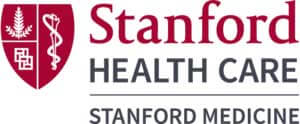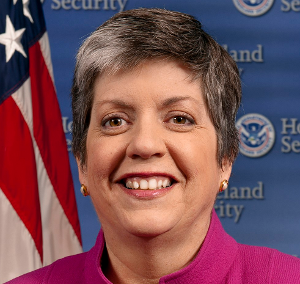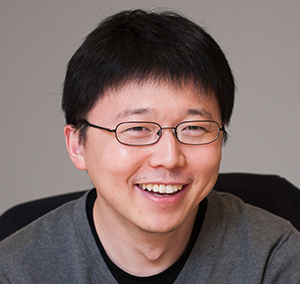Dr. Kirsch is a pediatric oncologist who spent over 20 years at the NCI as a basic researcher, attending physician, and, ultimately, Chief of the Genetics Branch within the Center for Cancer Research. The research interests of Dr. Kirsch have been focused on cancer specific genetic instability and cancer genetics. In 2005 Dr. Kirsch joined the biotech/pharma company, Amgen, as an Executive Director heading the Oncology Research group at Amgen Washington in Seattle. Dr. Kirsch currently serves as the Senior Vice President of Translational Medicine, Adaptive Biotechnologies, Seattle, Washington and South San Francisco, California. Read his full bio.
Interview with Ilan Kirsch of Adaptive Biotechnologies
Q: The Nobel Prize in Medicine was awarded recently to James Allison and Tasuku Honjo for their work on unleashing the body’s immune system to attack cancer, a breakthrough that has led to an entirely new class of drugs and brought lasting remissions to many patients who had run out of options. The Nobel committee hailed their accomplishments as establishing “an entirely new principle for cancer therapy.” What is your first-hand experience the impact that those new drugs had on patients?
A: For decades cancer was viewed as solely a cell-autonomous condition. Events leading to cellular transformation (mostly at the level of genomic DNA) occurred in a cell which caused its clonal proliferation and progression to a state of dysregulated and disordered growth defined as cancer. The concept that at least certain cancers might be viewed as foreign by the host immune system was controversial and widely debated. During this time some investigators, particularly at the NIH, were able to show that, at least for certain tumors like melanoma and renal cell cancer, tumor infiltrating lymphocytes could be extracted from tumor biopsies, expanded ex vivo, and when reinfused could cause the disappearance of bulk tumors. This proof of concept for cancer relevant immune modulation was bolstered over the past 20 years by the development of animal models demonstrating that by targeting certain immunomodulatory molecules like CTLA-4 and PD-1 in situ the immune system could be activated (or re-activated) to attack malignant cells. The discovery of these molecules and implications of their action led to the development of therapeutics modulating their activity. This was the basis for the recent awarding of the Nobel Prize to Honjo and Allison. The clinical application of these therapeutics has caused a fundamental reconsideration of the therapeutic armamentarium in cancer treatment. While the tumor itself is still the target of certain therapies, more and more those therapies are being considered in conjunction with the administration of or even being substituted by the administration of these immunomodulatory agents. While response to these agents is not universal in this first wave of therapeutic development, some of the responses in patients with disease that was previously considered intractable to therapy has been profound.
Q: What will the next generation of immune therapies will look like for cancer?
A: Having now established that cancer can be “immunogenic” (i.e. recognized as foreign and subject to an anti-cancer immune response) it seems likely that the next generation of therapies will build on this realization. An example of this might be a program that identifies tumor-associated or tumor-specific (also called ‘neo-antigens’ generated by mutations within the tumor’s DNA) antigens. Once identified in a tumor, cells recognizing these antigens could be expanded if they are found to already exist or could be specifically created and expanded to provide a new cellular therapeutic. Tumors that lack such antigens or are less immunogenic may be treated so as to become more immunogenic. A combination of adoptive immune cellular or in situ immune cell activating therapies may be combined in some sequence or synergistic approach to focus immune cell killing on the malignant growth and to keep the number and capability of those immune cells around to confer long term control of the malignancy.
Q: The checkpoint inhibitors and CAR-T therapies now on the market have only been approved for some cancer types and benefit only a small subset of those patients. What do you project the role of immunotherapy in cancer care will be ten years from now?
A: There is hope that the tumors within a given subtype of cancer as well as the certain types of cancer in general that currently appear to be resistant to immunotherapy will be found to be approachable with curative or controllable intent by the combinations and sequencing of agents described above. The types of engineered cellular therapies described above for example, may be able to play a role in this expanded application.
Q: Approved immunotherapy drugs have severe side effects, turning the fury of the immune system against the patient’s own healthy cells, and they are expensive, costing more than $100,000 a year. Do you expect any of those to change in the near future?
A: There is reason to believe that there are biomarkers that may be able to predict which patients are most likely to benefit from an immunotherapeutic, which patients are most likely to have responded successfully to an immunomodulatory therapeutic, and which patients are on the verge of developing toxic side effects from the administration of the therapeutic itself. These biomarkers are likely to be focused on the identification and monitoring of the most relevant immune cells themselves and on the production of effector molecules made by these cancer fighting cells. Use of these biomarkers will help identify patients most likely to benefit from immunotherapy and patients most likely to need intervention to avoid severe side effects. The use of these biomarkers will make the administration of these agents more cost-effective and the morbidity to the patient and health care cost to society less severe.
Q: Is there anything you would like to share with the PMWC audience?
A: Profiling the immune system by sequence-based analyses that enumerate, specify, and quantify each and every T- and/or B-cell in any sample of interest is now possible because of the coming together of a refined understanding of the basis for immunological diversity with the technological advances of high-throughput sequencing. This immune repertoire profiling is just one test of many but because the immune system is so fundamental to health and disease this platform may offer valuable insights and myriad applications. The ability to dissect this repertoire with high and practical throughput in order to search for the right T- or B-cells relevant to a particular patient’s disease may be one realization of the goal of precision medicine.
The Precision Medicine World Conference (PMWC), in its 17th installment, will take place in the Santa Clara Convention Center (Silicon Valley) on January 21-24, 2020. The program will traverse innovative technologies, thriving initiatives, and clinical case studies that enable the translation of precision medicine into direct improvements in health care. Conference attendees will have an opportunity to learn first-hand about the latest developments and advancements in precision medicine and cutting-edge new strategies and solutions that are changing how patients are treated.
See 2019 Agenda highlights:
- Five tracks will showcase sessions on the latest advancements in precision medicine which include, but are not limited to:
- AI & Data Science Showcase
- Clinical & Research Tools Showcase
- Clinical Dx Showcase
- Creating Clinical Value with Liquid Biopsy ctDNA, etc.
- Digital Health/Health and Wellness
- Digital Phenotyping
- Diversity in Precision Medicine
- Drug Development (PPPs)
- Early Days of Life Sequencing
- Emerging Technologies in PM
- Emerging Therapeutic Showcase
- FDA Efforts to Accelerate PM
- Gene Editing
- Genomic Profiling Showcase
- Immunotherapy Sessions & Showcase
- Implementation into Health Care Delivery
- Large Scale Bio-data Resources to Support Drug Development (PPPs)
- Microbial Profiling Showcase
- Microbiome
- Neoantigens
- Next-Gen. Workforce of PM
- Non-Clinical Services Showcase
- Pharmacogenomics
- Point-of Care Dx Platform
- Precision Public Health
- Rare Disease Diagnosis
- Resilience
- Robust Clinical Decision Support Tools
- Wellness and Aging Showcase
See 2019 Agenda highlights:
- Five tracks will showcase sessions on the latest advancements in precision medicine which include, but are not limited to:
- AI & Data Science Showcase
- Clinical & Research Tools Showcase
- Clinical Dx Showcase
- Creating Clinical Value with Liquid Biopsy ctDNA, etc.
- Digital Health/Health and Wellness
- Digital Phenotyping
- Diversity in Precision Medicine
- Drug Development (PPPs)
- Early Days of Life Sequencing
- Emerging Technologies in PM
- Emerging Therapeutic Showcase
- FDA Efforts to Accelerate PM
- Gene Editing / CRISPR
- Genomic Profiling Showcase
- Immunotherapy Sessions & Showcase
- Implementation into Health Care Delivery
- Large Scale Bio-data Resources to Support Drug Development (PPPs)
- Microbial Profiling Showcase
- Microbiome
- Neoantigens
- Next-Gen. Workforce of PM
- Non-Clinical Services Showcase
- Pharmacogenomics
- Point-of Care Dx Platform
- Precision Public Health
- Rare Disease Diagnosis
- Resilience
- Robust Clinical Decision Support Tools
- Wellness and Aging Showcase
- A lineup of 450+ highly regarded speakers featuring pioneering researchers and authorities across the healthcare and biotechnology sectors
- Luminary and Pioneer Awards, honoring individuals who contributed, and continue to contribute, to the field of Precision Medicine
- 2000+ multidisciplinary attendees, from across the entire spectrum of healthcare, representing different types of companies, technologies, and medical centers with leadership roles in precision medicine













